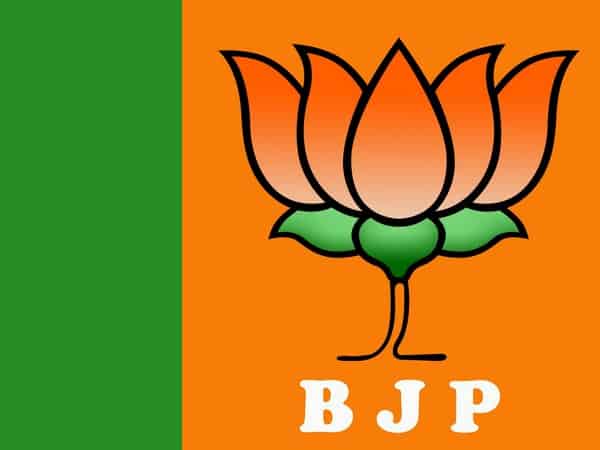It will be a mistake to ascribe the defeats of the Bharatiya Janata Party (BJP) in the Kairana, Noorpur and Bhandara-Gondiya by-elections in Uttar Pradesh and Maharashtra only to the tie-ups among its opponents.
While there is little doubt that in Kairana, an alliance of the Rashtriya Lok Dal (RLD), the Samajwadi Party (SP), the Bahujan Samaj Party (BSP) and the Congress led to the BJP’s defeat, it is also undeniable that the combine wouldn’t have worked if the Muslims, Dalits, backward castes and the Jats hadn’t turned against the BJP.
It is for the BJP to ascertain why they did so when a section of the economists is sanguine about the party’s prospects because of low inflation and high — 7.7 per cent — growth.
But the economy may not boost the party’s fortunes in a context of social fissures. As those associated with the Muslim and Christian communities like former Vice President Hamid Ansari and the Archbishop of Delhi, Anil Couto, have said, both the communities are living with a sense of insecurity. The reason apparently is the fear of suddenly being attacked and even killed by saffron groups on one pretext or another.
The unhappiness of the Dalits, too, has been obvious in the wake of several instances of lynching and the continuing tension in Uttar Pradesh’s Saharanpur area between the upper caste Rajputs and the Dalits, one of whose leaders, Chandrashekar Azad “Ravan”, has been in indefinite detention.
It is obvious that with sizable sections of the Muslims, who constitute 14.2 per cent of the population, Dalits (16.6 per cent) and Christians (2.3 per cent) alienated from the BJP, its chances of electoral success cannot be very high. The party did beat the odds against it in this respect in 2014, but that was because of the expectations of rapid, employment-oriented development raised by Narendra Modi.
Arguably, these hopes may still be fulfilled if the present growth rate continues. But jobs cannot provide any solace to people who feel that they are second class citizens in today’s India, as a retired police officer, Julio Ribeiro, has said.
The angst of the minorities has combined with the realisation among the BJP’s opponents that the only way to defeat it is via electoral tie-ups among themselves. This is what happened in Kairana, where a combined opposition seamlessly garnered the votes of the Muslims, the Dalits, the backward castes and the Jats.
It was the same in Noorpur, where the SP candidate received the support of the other opposition parties, and in Bhandara-Gondiya, where the Nationalist Congress Party (NCP) and the Congress successfully put up a untied fight against the BJP.
The formula, therefore, for success against the BJP is clear — unite or perish. As West Bengal Chief Minister Mamata Banerjee once said, the objective should be to offer the BJP a one-to-one fight by parties which are the most influential in a certain region.
If this is done, victory is assured as the Rashtriya Janata Dal’s three successive victories in Araria, Jehanabad and Jokihat in Bihar against the ruling Janata Dal-United have shown.
If the BJP managed to win in Palghar in Maharashtra against the Shiv Sena, it was because the latter’s over-confidence made it go it alone. Yet, the Sena’s leader, Uddhav Thackeray, recently spoke of the need for an opposition alliance against the BJP.
There is little doubt that the recent by-election victories, along with the formation of the Janata Dal (Secular)-Congress government in Karnataka, are being seen as precursors to a combined opposition at the national level.
If such a unity is achieved, it presages troubled times for the BJP because there is no way it can withstand such a concerted offensive. In a way, the united opposition will be a replica of the 24-member coalition government under Atal Behari Vajpayee which began to fall apart in the aftermath of the 2002 Gujarat riots.
In the present instance, the threat to an anti-BJP alliance is posed by the ambitions of several of its players — Rahul Gandhi, Mamata Banerjee, Mayawati, Sharad Pawar — to be the Prime Minister.
The BJP may be banking on such dissonance to stave off any challenge. But the party will nevertheless be aware that the ease with which it ascended to power in 2014 will be absent during the next general election for two reasons.
One is the sign that Modi’s appeal is not as overwhelming as it once was, if only because the anticipated revving up of the economy is taking time. And the other is the sameness of his criticism of the Congress — corruption, dynasty, et al. The party paid a heavy price for these sins in 2014 and lambasting it over and over again on the same issues runs the risk of what is known in legal terminology as double jeopardy where a person cannot be convicted of the same offence twice.
The political scene is poised, therefore, between the possibility of Modi not being as effective a campaigner as before and the opposition trying to counter him while battling its own fissiparous tendencies.
IANS

